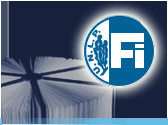| |
 |
Biblioteca Julio Castiñeiras. Sistema de Información Integrado - Facultad de Ingeniería UNLP
Facultad de Ingeniería | 115 esq.47 | Horario: Lunes a Viernes 8 a 19 hs.
E-mail: bibcentral@ing.unlp.edu.ar
|
|
|
|
|
|
|
|
|
|
|
Información bibliografica (registro INGC-EBK-000031) |
|
|
|
Título: |
Desiccant-Assisted Cooling Fundamentals and Applications / edited by Carlos Eduardo Leme Nobrega, Nisio Carvalho Lobo Brum. |
Otros autores: |
|
Brum, Nisio Carvalho Lobo, ed.
 |
Nóbrega, Carlos Eduardo Leme, ed.
|
Nóbrega, Carlos Eduardo Leme, ed.
 |
|
|
Editado por: |
Springer London :;Imprint: Springer,
|
Año de publicación: |
2014.
|
Lugar de publicación: |
London :
|
Descripción física: |
vii, 281 p. : il. |
ISBN: |
9781447155652
|
Materias: |
|
Industrial Chemistry |
Building construction. |
Air pollution. |
Building Physics, HVAC. |
Atmospheric Protection/Air Quality Control |
Chemical engineering. |
Engineering. |
|
Notas: |
An Introduction To Solid Desiccant Cooling Technology -- Status of Liquid Desiccant Technologies and Systems -- Mathematical Modeling of Heat and Mass Transfer in Regenerators with Desiccant Materials -- Influence of Altitude on the Behavior of Solid Desiccant Dehumidification System -- The Performance of Desiccant Wheels for Desiccant Air-Conditioning -- Separate Sensible and Latent Cooling -- Membrane-based liquid-to-air energy exchangers -- Adsorption/Desorption Characteristics of Solid Particles in Desiccant Bed for Different Design Configurations -- Desiccant dehumidification integrated with hydronic radiant cooling -- Desiccant Cooling. |
Sumario: |
The increasing concern with indoor air quality has led to air-quality standards with increased ventilation rates. Although increasing the volume flow rate of outside air is advisable from the perspective of air-quality, it is detrimental to energy consumption, since the outside air has to be brought to the comfort condition before it is insufflated to the conditioned ambient. Moreover, the humidity load carried within outside air has challenging HVAC engineers to design cooling units which are able to satisfactorily handle both sensible and latent contributions to the thermal load. This constitutes a favorable scenario for the use of solid desiccants to assist the cooling units. In fact, desiccant wheels have been increasingly applied by HVAC designers, allowing distinct processes for the air cooling and dehumidification. In fact, the ability of solid desiccants in moisture removal is effective enough to allow the use of evaporative coolers, in opposition to the traditional vapor-compression cycle, resulting in an ecologically sound system which uses only water as the refrigerant. Desiccant Assisted Cooling: Fundamentals and Applications presents different approaches to the mathematical modeling and simulation of desiccant wheels, as well as applications in thermal comfort and humidity controlled environments. Experts in the field discuss topics from enthalpy, lumped models for heat and mass transfer, and desiccant assisted radiant cooling systems, among others. Aimed at air-conditioning engineers and thermal engineering researchers, this book can also be used by graduate level students and lecturers in the field. |
URL: |
http://dx.doi.org/10.1007/978-1-4471-5565-2
|
|
|
Tapa y contenido (Amazon.com) |
|
|
El software empleado por esta biblioteca esta basado en el
Koha
Software OSS para gestion de Bibliotecas, y cumple estándares internacionales de informacion web
Número de visitantes:
|
|
|